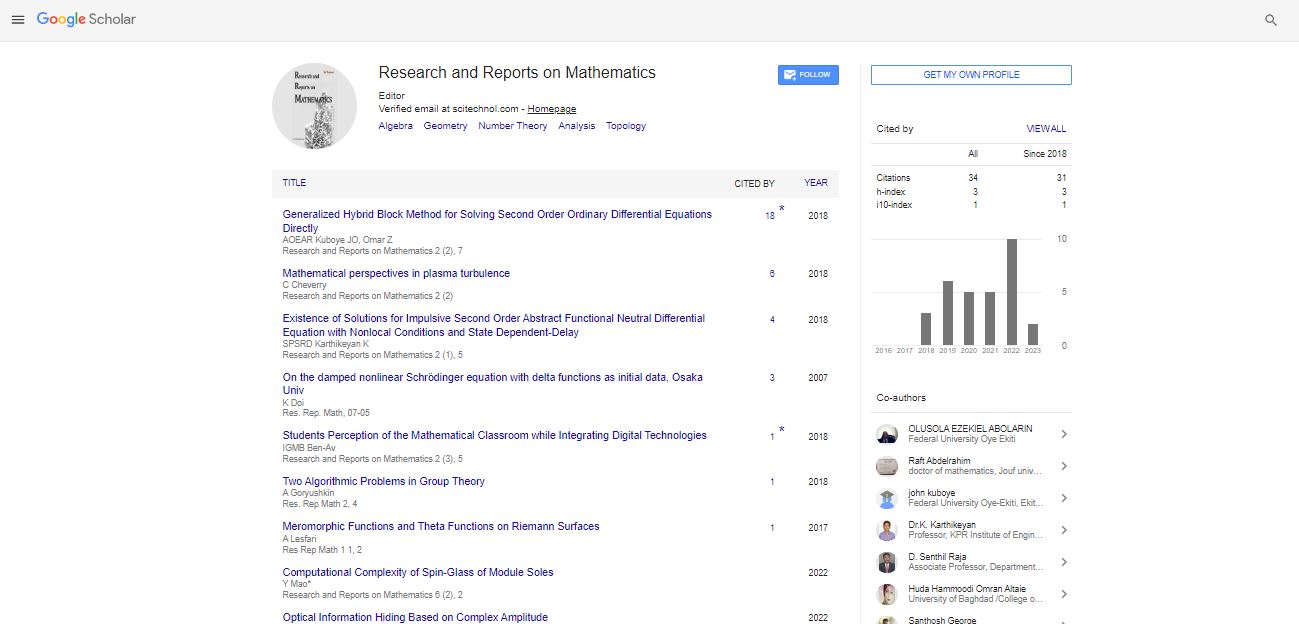Perspective, Met Mater Int Vol: 8 Issue: 1
Metallic Pathways to Energy Resilience: Innovations in Storage and Conversion
Zhiliang Yang*
1Department of Materials Science and Chemical Engineering, Harbin Engineering University, Harbin, China
*Corresponding Author: Zhiliang Yang,
Department of Materials Science and
Chemical Engineering, Harbin Engineering University, Harbin, China
E-mail: zhiliang@hrbeu.edu.cn
Received date: 24 February, 2024, Manuscript No. RRMT-24-136640;
Editor assigned date: 28 February, 2024, PreQC No. RRMT-24-136640 (PQ);
Reviewed date: 14 March, 2024, QC No. RRMT-24-136640;
Revised date: 21 March, 2024, Manuscript No. RRMT-24-136640 (R);
Published date: 28 March, 2024, DOI: 10.4172/Rrmt.1000198
Citation: Yang Z (2024) Metallic Pathways to Energy Resilience: Innovations in Storage and Conversion. Met Mater Int 8:1.
Description
The demand for efficient energy storage and conversion technologies has surged in recent years due to the increasing penetration of renewable energy sources and the need for grid stabilization. Metals plays an important role in various energy storage and conversion systems, ranging from batteries and supercapacitors to fuel cells and electrolyzes. This Study provides a comprehensive review of the role of metals in energy storage and conversion, highlighting recent advancements, challenges, and future directions. The growing concerns over climate change and the depletion of fossil fuel reserves have intensified research efforts towards sustainable energy solutions. Energy storage and conversion technologies are essential components of the transition to a low-carbon economy.
Metals, owing to their unique properties, are integral to many of these technologies, enabling efficient energy storage and conversion processes. This section introduces the significance of metals in energy storage and conversion and outlines the structure of the study. Batteries are vital for storing electrical energy from renewable sources and powering portable electronics, Electric Vehicles (EVs), and gridscale energy storage systems. This section provides an overview of the role of metals in different battery chemistries, including Lithium-Ion Batteries (LIBs), Sodium-Ion Batteries (SIBs), and beyond lithium-ion batteries. It discusses the role of metals such as lithium, cobalt, nickel, manganese, and aluminium in electrode materials and electrolytes, highlighting their impact on battery performance, cost, and sustainability.
Supercapacitors, also known as ultracapacitors or electrochemical capacitors, offer high-power density and rapid charge-discharge rates, making them ideal for applications requiring short bursts of energy. Metals play an essential role in supercapacitor electrodes, current collectors, and electrolytes. This section discovers the use of metals such as carbon, manganese dioxide, ruthenium oxide, and graphene in supercapacitor electrodes and discusses strategies for enhancing their energy density, cycling stability, and electrochemical performance. Fuel cells convert chemical energy directly into electrical energy through electrochemical reactions, offering high efficiency and low emissions. Metals serve as catalysts and conductive components in fuel cell electrodes and electrolytes.
This section examines the role of metals such as platinum, palladium, nickel, and titanium in different types of fuel cells, including Proton Exchange Membrane Fuel Cells (PEMFCs), Solid Oxide Fuel Cells (SOFCs), and Alkaline Fuel Cells (AFCs), discussing their catalytic activity, durability, and cost considerations. Electrolyzers utilize electrical energy to split water into hydrogen and oxygen, providing a renewable and clean source of hydrogen for various applications, including fuel cells, transportation, and industrial processes. Metals play a vital role as catalysts and electrode materials in electrolyzes. This section explores the use of metals such as platinum, iridium, nickel, and cobalt in electrolyzes electrodes and discusses strategies for improving efficiency, durability, and costeffectiveness. Despite significant progress, several challenges remain in the widespread adoption of metals-based energy storage and conversion technologies, including cost, resource availability, environmental impact, and technological limitations.
This section identifies key challenges and discusses potential strategies for overcoming them, such as material innovation, recycling, and scaling up production. It also highlights emerging opportunities for research and development in this field, such as advanced materials design, multifunctional hybrids, and integrated energy systems. Looking ahead, continued research and innovation will be essential for unlocking the full potential of metals in energy storage and conversion. This section outlines future research directions and technological advancements that could drive the development of next-generation energy storage and conversion technologies. It emphasizes the importance of interdisciplinary collaboration, policy support, and market incentives in accelerating the transition towards a sustainable energy future.
Conclusion
Metals play a central role in enabling efficient, reliable, and sustainable energy storage and conversion technologies. This manuscript has provided a comprehensive overview of the role of metals in batteries, supercapacitors, fuel cells, and electrolyzes, highlighting recent advancements, challenges, and future directions. By addressing these challenges and embracing emerging opportunities, we can pave the way for a cleaner, greener, and more resilient energy landscape. This offers a thorough exploration of the role of metals in energy storage and conversion, from their use in batteries and supercapacitors to fuel cells and electrolyzes. It emphasizes the importance of ongoing research and innovation in unlocking the full potential of metals for a sustainable energy future.
 Spanish
Spanish  Chinese
Chinese  Russian
Russian  German
German  French
French  Japanese
Japanese  Portuguese
Portuguese  Hindi
Hindi 